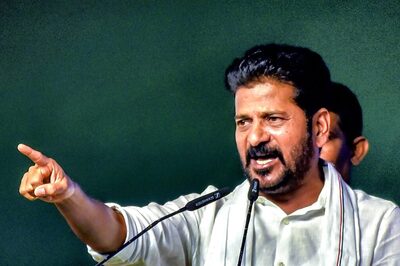
views
New Delhi: Chubby isn’t cute and fat is not healthy. Because obesity is a real health problem, a disease, an ailment and a report by the World Obesity Federation says that no country has a better than 50 per cent chance of meeting their target for tackling childhood obesity.
After agreeing at the World Health Assembly in 2013 that countries should ensure their levels of childhood obesity are no higher in 2025 than they were in 2010-2012, the latest analysis of trends in 196 countries found that 156 countries have less than a 10 per cent chance of meeting their target. By the year 2020, there would be 158 million obese children in the world, 206 million by 2025 and the figure would reach 254 million by 2030.
India, which is still dealing with the problem of malnourishment which threatens to thwart the ambitious nutrition targets set for 2022, is also fighting the obesity menace and is not too far away when it comes to catching up with developed countries on this.
In fact, after China, India will have the most number of obese children at 27,481,141 or 27 million, far ahead of the US at 17 million. According to estimates, China which will have 62 million obese children by 2030.
The National Health Portal of India defines obesity as a condition where a person has accumulated abnormal or excessive body fat that causes negative effects on health.
For an individual, obesity is usually the result of an imbalance between calories consumed and calories expanded. An increased consumption of high calorie foods, without an equal increase in physical activity leads to an increase in weight. Decreased levels of physical activity will also result in an energy imbalance and lead to weight gain.
Once considered a concern of high-income countries, the problem of being overweight and obesity is increasing in low-income and middle-income countries, especially in urban areas.
It is damaging the health prospects for rich and poor countries alike, says the World Obesity Federation. The Democratic Republic of Congo will have 2.4 million obese children with obesity and Tanzania and Vietnam will have 2 million each by 2030.
Here are some shocking facts for India which should serve as a wake-up call. Existence of any policy on marketing of foods to children is absent in India, says the report. However, the country has worked in the direction of existing policies to reduce physical inactivity and efforts are underway to reduce the norm of unhealthy diet that lead to rise in non-communicable diseases
Some figures presented in the Atlas of Childhood Obesity paint a rather grim picture.
In 2016, India had 3.7 per cent obese boys aged 5-9 years, while the figure for girls in the same bracket was 2.6 per cent. During the same year, there were 1.8 per cent obese boys and 1.1 per cent girl in the age bracket of 10-19 and.
In 2010, India had 69.6 per cent physically inactive adolescent boys 71.6 per cent inactive adolescent girls. India’s childhood obesity risk score stands at 4/11 and the chances of meeting the WHO standards for 2025 is almost nil.
The projection was done from the NCD Risk Factor Collaboration Worldwide trends in body-mass index, underweight, overweight and obesity from 1975 to 2016.
A recent report published in The Lancet Child & Adolescent Health by the India State-Level Disease Burden Initiative, a collaboration of the Indian Council of Medical Research, the Public Health Foundation of India and the Institute for Health Metrics and Evaluation, concluded that obesity was on the rise in the country. Its prevalence among children increased during 1990-2017, the period of the study, with an annual rise of 4.98 per cent.
The projected prevalence is 17.5 per cent in 2030. “Overall obesity rates have doubled between National Health Survey 4 and National Health Survey 5,” says Professor Vinod K Paul, member of the Niti Aayog. Prof Paul is a neonatologist who has contributed to India’s national programmes on reproductive and child health and nutrition.
However, experts say the problem has only started as malnutrition is a larger concern in India. “Malnutrition in children is a bigger problem and that is a leading cause of many metabolic and other life-threatening disorders among children,” says Dr Balram Bhargava, head of the Indian Council of Medical Research.
The report in the Atlas of Childhood Obesity provides the latest estimates of prevalent obesity among infants, children and adolescents in 196 countries. It also provides estimates of the prevalence and number of children living with obesity in 2030, along with an estimate of the probability of achieving the World Health Organisation (WHO) target of ‘no increase in obesity prevalence by 2025’ on the assumption that the present trends would continue.
“The dramatic rise in the number of children affected by obesity is being driven by emerging economies – in Asia, the Middle East and Latin America,” said Dr Tim Lobstein, Director of Policy at the WOF and one of the authors of the World Obesity Federation’s report.
“While North America, Europe, Australia and New Zealand are stabilising at high levels, the rest of the world is rapidly catching up, and in the case of some smaller countries, heavily dependent on imported food supplies, now overtaking the levels seen in the West.”


















Comments
0 comment